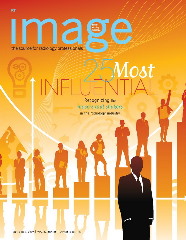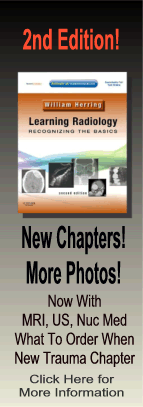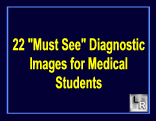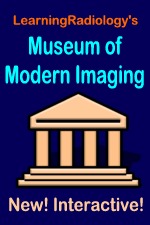| Cardiac | |
|---|---|
| GI | |
| Bone | |
| GU | |
| Neuro | |
| Peds | |
| Faculty | |
| Student | |
| Quizzes | |
| Image DDX | |
| Museum | |
| Mobile | |
| |
Misc |
| Videocasts | |
| Signs | |
Learning
Radiology:
Recognizing
the Basics
Available
on the Kindle
and IPad
LearningRadiology Imaging Signs
on Twitter
![]()
Follow us on
What is the most likely diagnosis?
- 38 year-old with extreme pain in left leg

Axial CT scan through both legs
- Lipohemarthrosis
- Osteomyelitis
- Testicular Torsion
- Paget Disease
- Necrotizing Fasciitis
Additional Images-Axial CT scan through both legs
![]()
Answer:
5. Necrotizing Fasciitis
More (Click Discussion Tab)
Necrotizing Fasciitis
General Considerations
- A rapidly progressive, infection of fascia which leads to subsequent necrosis of the subcutaneous tissue; muscles are frequently spared
- It may be caused by several organisms of groups of organisms
- Type 1: Polymicrobial
- Bacteroides, Clostridium, or Peptostreptococcus) in combination with streptococci other than group A and E. coli, Enterobacter, Klebsiella or Proteus
- Type 2: Group A beta-hemolytic streptococcus
- Clostridial infections (gas gangrene)
MORE . . .
.
This Week
38 year-old with extreme pain in left leg |
Some of the fundamentals of interpreting chest images |
The top diagnostic imaging diagnoses that all medical students should recognize according to the Alliance of Medical Student Educators in Radiology |
Recognizing normal and key abnormal intestinal gas patterns, free air and abdominal calcifications |
Recognizing the parameters that define a good chest x-ray; avoiding common pitfalls |
How to recognize the most common arthritides |
LearningRadiology
Named Magazine's
"25 Most Influential"

See Article on LearningRadiology
in August, 2010
RSNA News
| LearningRadiology.com |
is an award-winning educational website aimed primarily at medical students and radiology residents-in-training, containing lectures, handouts, images, Cases of the Week, archives of cases, quizzes, flashcards of differential diagnoses and “most commons” lists, primarily in the areas of chest, GI, GU cardiac, bone and neuroradiology. |




